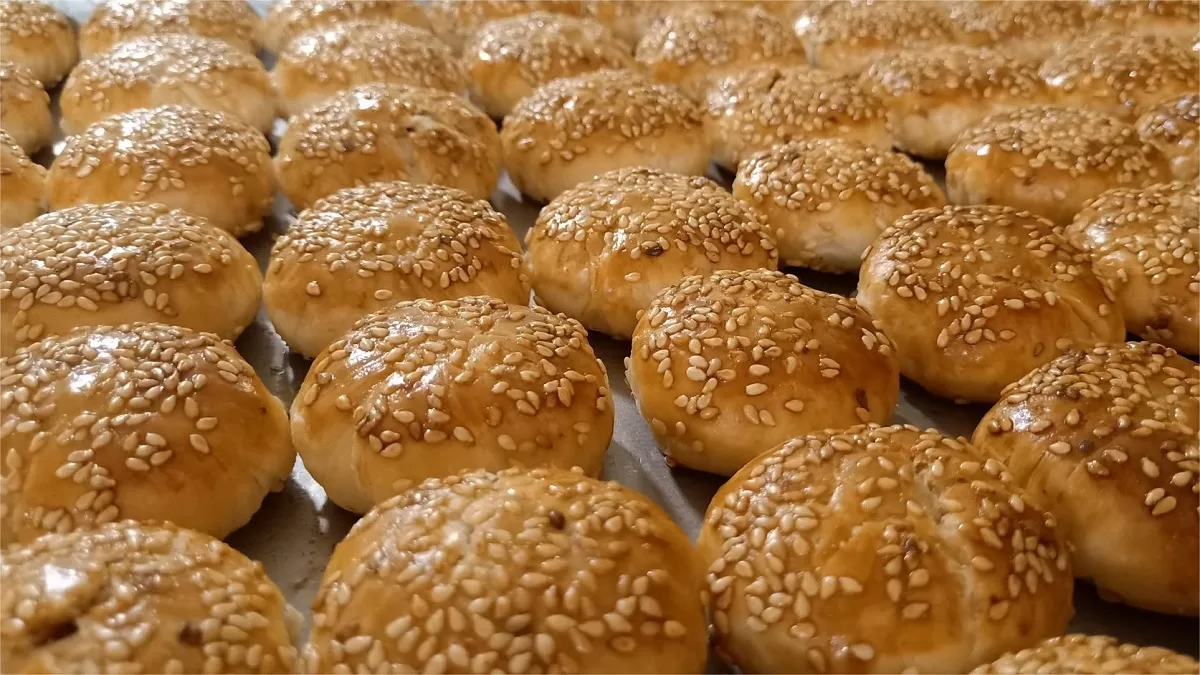Qizi Shaobing (棋子烧饼), also known as Chess Piece Buns, is a distinctive specialty hailing from the Tangshan region of Hebei Province in China. These unique pastries derive their name from their resemblance to small drums or chess pieces. Qizi Shaobing is crafted using a blend of pork oil and fragrant sesame oil in the pastry, which is then filled with a variety of ingredients, including meat, sugar, assorted fillings, Chinese sausage, and ham. These buns boast a golden hue, a crispy texture on the outside, and a flavorful, succulent meat filling, making them not only delicious but also easy to store.
Preparation
- First, chop the meat finely and mix it with ingredients like green onions, soybean paste, and sesame oil to create a savory filling.
- Shape the pastry: Combine the flour with water to form a dough for the outer layer. Roll it out into circular sheets, place the filling in the center, and fold it in half. Seal the edges with a rolling pin, creating a rectangular shape. Trim off any excess dough from the sides. Cut the rectangle into two pieces, roll each piece into a log, and then divide them into smaller portions.
- Take one portion and use your thumb to create an indentation at the seam. Fill the indentation with the meat filling, fold and seal the edges, and then gently rotate the bun to give it a chess piece shape.
- Sprinkle sesame seeds evenly over the surface of the bun.
- Place the prepared Chess Piece Buns on a baking tray.
- Bake until they turn a delightful apricot color, with a crispy exterior and a tender interior.
Story of Origion
The origins of Qizi Shaobing can be traced back to the city of Fengrun in the late 20th century. At that time, Tangshan was experiencing significant industrial development, particularly in the mining sector, which led to its rise as an industrial hub. This economic growth also gave rise to a thriving culinary scene. One renowned eatery in the vicinity, known as Jiumei Zhai, was owned by a forward-thinking entrepreneur named Zhao Dongfu.
When Zhao heard about the popularity of Fengrun’s Chess Piece Buns among his customers, he sent one of his chefs to secretly learn the art of making these buns. After the chef uncovered the secrets behind their preparation, he suggested using high-quality fine flour and expanding the range of fillings to include pork.
The resulted Chess Piece Buns boasted a golden hue, and had a crispy exterior, tender layers, and a rich meaty flavor. Word of these delectable buns quickly spread far and wide, establishing them as a unique and highly sought-after culinary delight in the Tangshan region. It is even said that in the 1960s, during a visit to Poland, Premier Zhou Enlai sent representatives to Tangshan to purchase Chess Piece Buns as a special gift for foreign dignitaries, highlighting their cultural and gastronomic significance.


